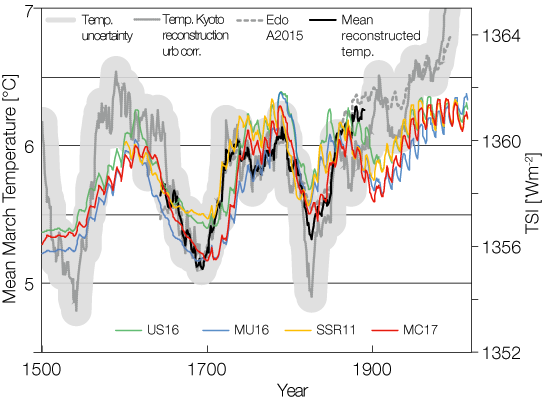Overview
The SOL-PHENO project (Quantification of Solar Irradiance Forcing by Combining Climate and Phenological Models) aims to use the dates of cherry blossom in Kyoto and Edo in Japan as a historical climate proxy to help modelling solar irradiance back to about the year 1500 in order to predict future solar irradiance forcing.

